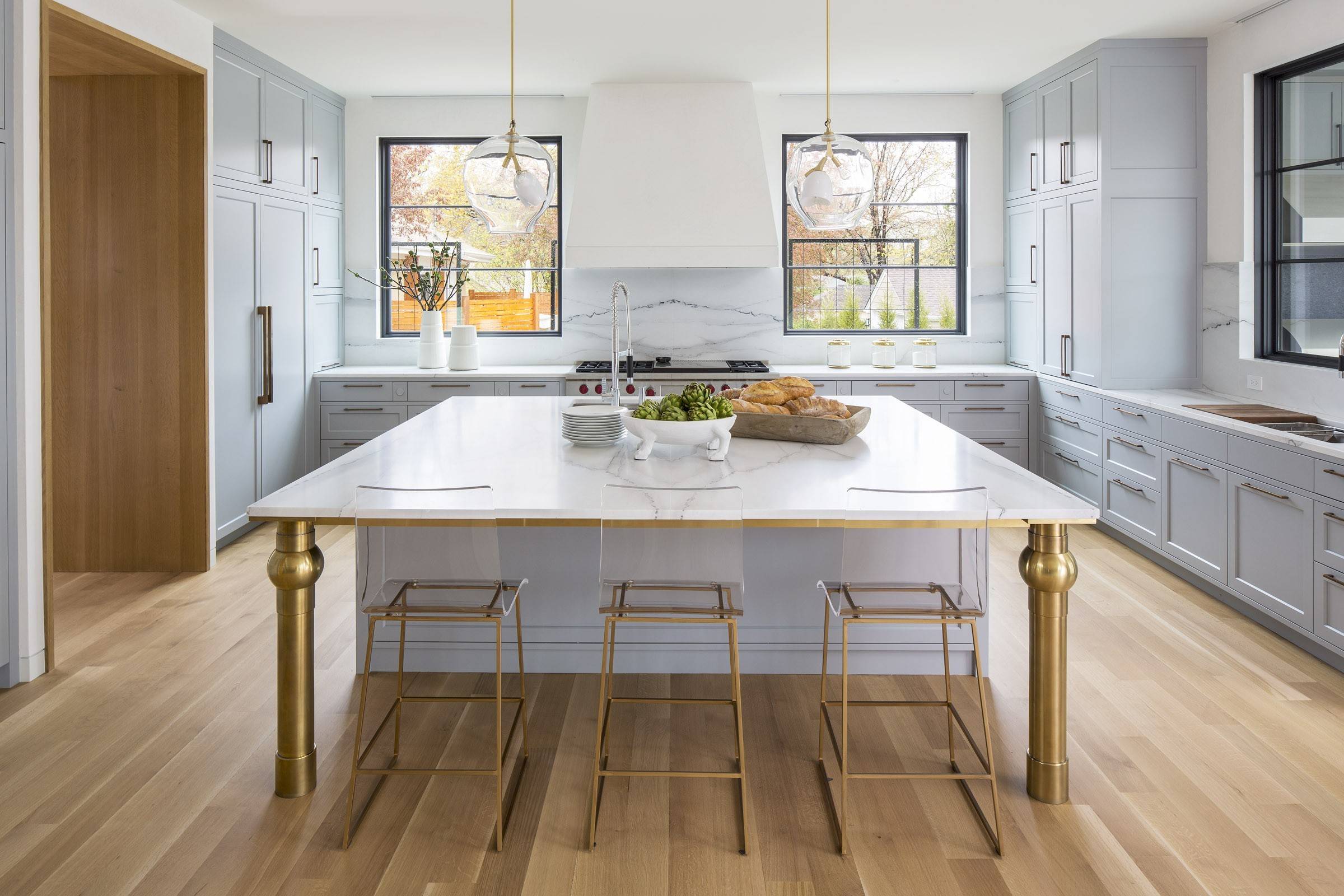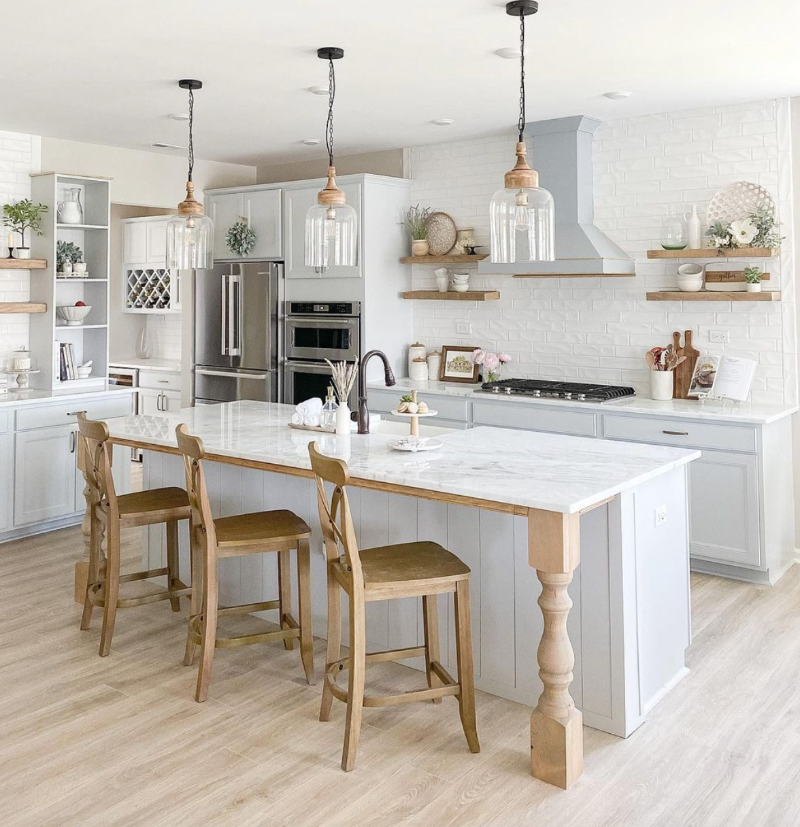Trendy Kitchen Island Legs: Raise Your Kitchen Design
Trendy Kitchen Island Legs: Raise Your Kitchen Design
Blog Article
A Guide to Choosing the Perfect Kitchen Island for Your Home
Recognizing your kitchen area's spatial dynamics is the initial action, making certain that the island fits flawlessly without interfering with the circulation. The selection of coatings and products likewise plays an important role in harmonizing the island with your cooking area's general design.
Examining Your Room
Before selecting a kitchen island, it is important to completely analyze your room to guarantee the addition will be both functional and visually pleasing. Begin by gauging the available location, consisting of the size, length, and height of the kitchen area. Exact measurements are crucial to avoid acquiring an island that bewilders the space or one that is disproportionately tiny.
Consider the existing design and how the island will integrate with the existing website traffic flow. A well-placed island ought to not restrain or obstruct pathways access to crucial appliances, such as the stove, refrigerator, and sink. Leave adequate clearance area-- usually around 36 to 48 inches on all sides-- to allow for comfortable activity and work space efficiency.
Next, review the natural light and sightlines within your cooking area. An island that blocks a home window or interferes with visual communication can make the area feel dark and cramped. Believe about how the island's placement will certainly affect lights and visibility, guaranteeing it improves rather than takes away from the cooking area's ambiance.
Identifying the Function
Identifying the purpose of your kitchen area island is an important step in ensuring it fulfills your certain needs and choices. Before diving into style or dimension factors to consider, it is important to clarify what main function the island will serve in your kitchen. Will it be a central hub for meal preparation, an informal dining location, or perhaps an extra storage remedy?
For those who appreciate cooking, integrating home appliances such as a cooktop or sink could be necessary. In addition, adequate counter space for slicing and mixing, in addition to available storage for kitchen tools and ingredients, can change the island right into a reliable workstation. Conversely, if the island is meant to offer or assist in social interactions as a dining location, seating setups become critical. In this situation, ensuring adequate legroom and surface area for comfortable eating experiences is important.

Picking the Right Size
Selecting the right size for your kitchen island is a balance of capability and room optimization. An excellent kitchen area island must offer ample workspace while ensuring that movement around the kitchen area continues to be unobstructed. Begin by determining your kitchen area room; a minimal clearance of 36 to 42 inches around the island is needed to permit comfy activity and access.
The measurements of the island should reflect its desired usage. If the island will serve largely as a prep location, a width of 24 to 36 inches could be sufficient.

Lastly, ensure that the island's size enhances the overall kitchen area format, preventing any type of overwhelming visibility that might take away from the cooking area's aesthetic and utility - kitchen island legs. Careful planning and precise measurements will aid you achieve a unified and reliable cooking area setting
Finding Products and Finishes
After determining the ideal size for your cooking area island, the next action entails selecting appropriate materials and surfaces. The selection of products considerably impacts both the visual appeal and capability of your cooking area island. Popular materials for kitchen counters include quartz, granite, and butcher block, each offering unique advantages. Granite, understood for its resilience and ageless elegance, is highly resistant to scrapes and heat. Quartz, an engineered stone, supplies a non-porous surface area that stands up to germs and discolorations. Butcher block, my site made from wood, includes a cozy, rustic appeal and is excellent for cooking.
In enhancement to the countertop, consider the materials for the space station. Strong wood offers a timeless, durable look, while stainless-steel gives a sleek, contemporary appearance and is very easy to clean. Painted coatings can present a splash of color, with options varying from low-key pastels to vibrant, vivid colors.
Pay attention to the toughness of surfaces, particularly in high-traffic areas, to keep the island's look over time. Picking the right materials and finishes will certainly improve both the performance and visual charm of your kitchen island.
Incorporating Functional Functions
Integrating functional functions right into your kitchen island can considerably improve its utility and benefit, transforming it into a versatile focal point of your cooking area. One necessary feature to consider is extra storage. Incorporating closets, cabinets, and open shelving can provide much-needed area for cooking equipment, utensils, and tiny home appliances, aiding to maintain a clutter-free setting.
Another valuable addition is an integrated sink or cooktop, which can improve meal prep work and clean-up procedures. A sink can help with tasks such as cleaning vegetables and cleaning up meals, while a cooktop can permit food preparation directly on the island, promoting a much more social and interactive cooking experience.
Take into consideration including seating alternatives, specifically if your kitchen increases as an informal eating area. Bar stools or built-in benches can transform the island into a multifunctional space for dishes, research, or laid-back celebrations.
Lastly, incorporating electric outlets right into your kitchen area island can enhance its news functionality. Outlets offer hassle-free access for tiny kitchen home appliances, billing stations for electronic gadgets, and extra lights options.
Final Thought

Prior to selecting a kitchen island, it is crucial to completely evaluate your space to make sure the addition will be both useful and aesthetically pleasing.Selecting the ideal size for your kitchen island is a balance of functionality and space optimization. kitchen island legs. An ideal kitchen island ought to supply sufficient work area while making sure that activity around the cooking area remains unobstructed.Including functional features right into your cooking area island can dramatically enhance its energy and benefit, changing it right into a versatile focal point of your cooking area.In conclusion, choosing the excellent kitchen area island demands a thorough analysis of the available space, clearness regarding its primary function, and mindful consideration of the suitable dimension and products
Report this page